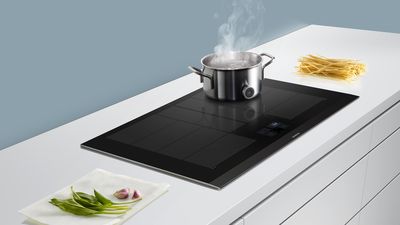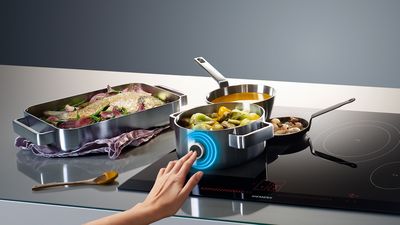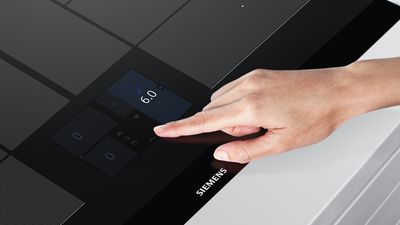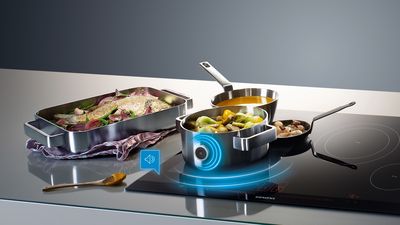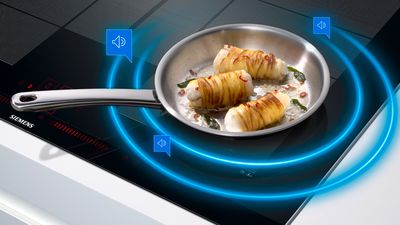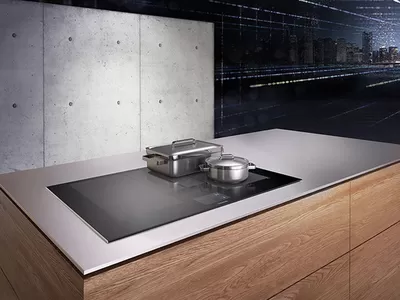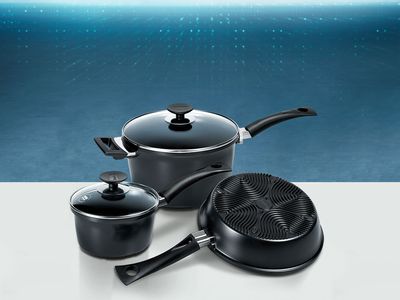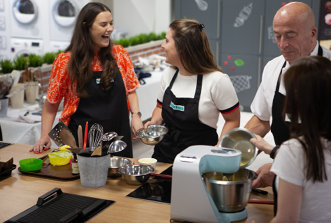Reach the perfect moment – with cookingSensor Plus and fryingSensor Plus
The greatest challenge for every chef is finding the optimal cooking temperature for each dish. Whether it's pasta, steak or fresh vegetables – it is the unique moment when food releases its full flavour and inimitable firmness – a brief moment that cannot be forced and is easy to miss. With a sophisticated regulation system, the Siemens fryingSensor Plus and the cookingSensor Plus make this skill easy to obtain fully automatically for everyone.
The right cooking temperature
Every food has its perfect cooking temperature. The Siemens cookingSensor Plus helps you to never miss it. Choose your setup:
| 170 °C | Fry | The sensor keeps the temperature constantly between 170 °C and 180 °C. The right choice for breaded meat and vegetables or fried pastry like cream puffs and doughnuts. |
| 120 °C | Cooking with a pressure cooker | The temperature stays steady at around 110 °C and 120 °C. Best for chicken, rice, potatoes or stew prepared with a pressure cooker. |
| 100 °C | Cooking everday meals | Temperature is never less than 90 °C or higher than 100 °C. Perfect for potatoes and pasta or most sorts of meat and vegetables. |
| 90 °C | Steam or simmer | Constant temperature between 80 °C and 90 °C. The right temperature to steam fish or prepare rice, polenta and sausages. |
| 70 °C | Unfreeze, heat up or keep warm | 60 °C and 70 °C for anything you'd like to warm up or keep warm, but don't want to boil like tinned food or mulled wine. |
Different temperatures for different types of food
In a frying pan, the best suited temperatures can differ greatly. Check the info below to make the most of your future cooking plans:
| High frying temperature | Used to fry food that requires high temperatures, such as steaks cooked rare, hashbrowns or french fries. |
| Medium to high frying temperature | Used to deep-frozen and breaded food, cooking steaks medium or well-done, as well as preparing dishes like ragout and fresh vegetables. |
| Medium to low frying temperature | Used to fry fish and rich food, such as burgers and sausages. |
| Low frying temperature | Fry food using extra virgin olive oil, butter or margarine, such as omlettes. |
| Very low frying temperature | Preparing and boiling down sauces, sweating vegetables and for frying food. |


